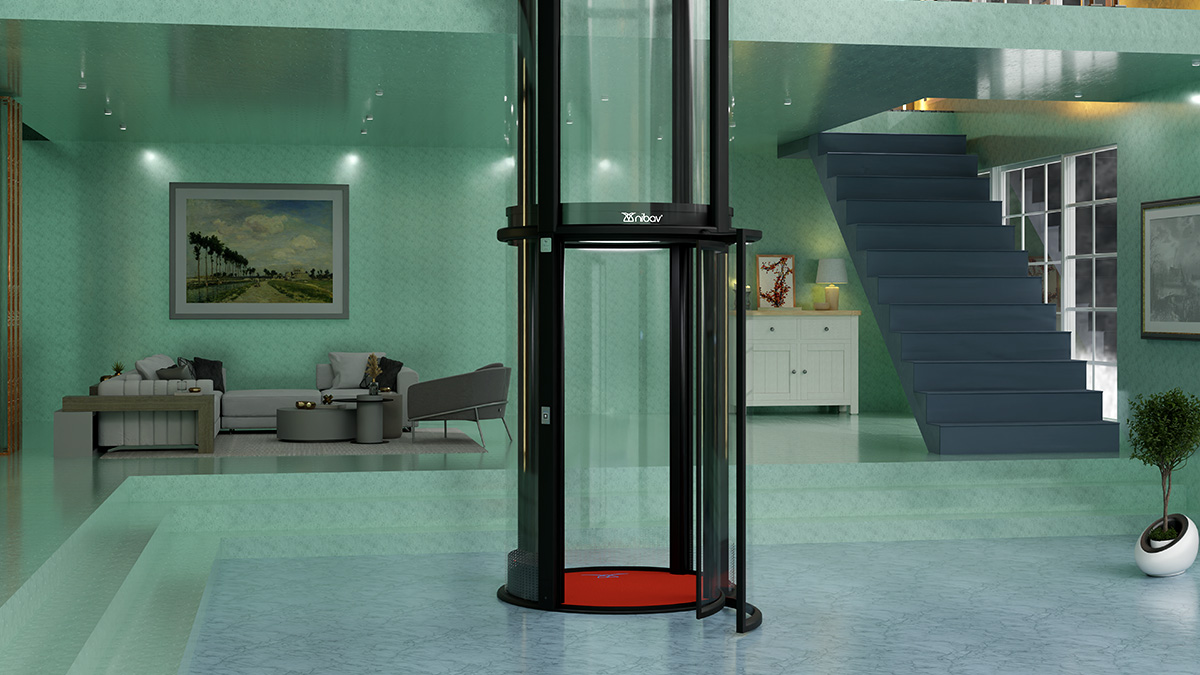
Table of Contents
Not too long ago, home elevators were the kind of thing you’d expect to see in mansions or luxury penthouses. However, nowadays? They’re being installed in traditional homes, compact bungalows, and even duplex condos. The best part? You can have one without breaking the bank.
Modern engineering advancements and ingenuity now make affordable residential elevators realistic for more homeowners. Whether you’re thinking ahead for aging-in-place, adding convenience for daily life, or simply upping your home’s value, there are options that won’t burn a hole in your wallet.
But here’s the trick: “affordable” doesn’t just mean “cheap.” It means getting the right balance of price, performance, safety, and style—all without compromise. So how do you know what to look for?
Let’s break it down.
Affordable – What Does it Even Mean in Residential Elevators?
“Affordable” is a word that gets thrown around a lot—but when it comes to affordable residential elevators, it’s not just about the lowest sticker price. It’s about getting real value for your money.
A truly affordable elevator should check three boxes:
Upfront Cost That Makes Sense
You shouldn’t have to dip into your retirement fund to install a lift. Today’s shaftless, pitless models are designed to cut down on heavy construction work—which means lower costs from the get-go.
Low Maintenance Costs
If the elevator is very affordable to install, but far more expensive to maintain? That’s not affordable. The right kind of elevator should ideally run well with little ongoing maintenance, reliable safety features, smart technology that can notify if there are issues with the elevator in advance.
A Lifelong Investment
Think long-term. A well-designed residential elevator adds value to your home, adapts with your needs as you age, and makes life easier for everyone—from toddlers to grandparents. That kind of return? Priceless.
In short, an affordable elevator is one that fits your budget and your lifestyle—without cutting corners.
Top Features to Look For in an Affordable Residential Elevator
Just because you want to stick to a budget doesn’t mean you have to downgrade. The best budget elevators for homes have all of the features that you want; you just have to know what to consider.
1. Shaftless System
This could change the game. Shaftless elevators save you dramatic annoyance and cost by avoiding a lot of structural changes. No pit, no machine room, no fuss. Just a nice, tidy unit that goes right into your building.
2. Efficiency
Air-driven, or pneumatic elevators, are not only smooth and quiet. They run on so little energy that you save on lower utilities for a lifetime, adding to the affordability.
3. Basic Safety Features (Done Right)
Affordable should never mean unsafe. Look for emergency brakes, door interlocks, power backup, and a built-in telephone or GSM system. These should come standard—even in budget-friendly models.
4. Smooth, Low-Maintenance Operation
A good elevator doesn’t need a technician every month. Choose one with smart monitoring features that alert you (or the provider) to any issues early on—saving money and avoiding headaches.
5. Compact Footprint
An affordable model should also be space-savvy. Whether it’s a two-person size or even smaller, a good design fits neatly into your home without the need to sacrifice rooms or storage.
Remember: affordability is about balance. You want a model that keeps your costs down—without stripping away what really matters.
Installation Factors That Affect Cost
When people think of affordable residential elevators, they often focus on the price tag of the unit itself. But the real cost story? It’s also about installation. And that’s where things can swing from budget-friendly to budget-breaking—fast.
1. Construction Work (or Lack of It)
Traditional elevators need deep pits and overhead space, which means major remodeling. That’s costly. Modern models—especially shaftless, pitless options—cut down drastically on labor, material, and time. The less your home needs to be torn up, the more affordable the project stays.
2. Location Inside the Home
Where you choose to install your lift matters. An elevator that goes through a closet or corner nook often needs fewer changes than one cutting through open-concept spaces or multiple rooms. Strategic placement = lower construction cost.
3. Number of Floors
The more levels your elevator needs to cover, the more you’ll pay—not just for the elevator components but for the installation hours, permits, and reinforcements.
4. Local Permits and Regulations
Depending on where you live, you may need city permits, inspections, or modifications to meet local building codes. These add to the final bill, but working with experienced providers can keep surprises to a minimum.
5. Provider Experience
Seasoned installers know how to make things faster, smoother, and less expensive in the long run. Inexperienced teams might lead to rework—or worse, damage—that costs more than you bargained for.
Bottom line? Choosing an elevator that’s easy to install is just as important as choosing one that’s easy on your wallet.
Common Mistakes to Avoid When Shopping for Affordable Residential Elevators
Trying to save money on a residential elevator? Smart move. But affordability doesn’t mean cutting corners. Here are some common missteps that can actually cost you more in the long run—and how to sidestep them like a pro.
Going for the Cheapest Option Without Checking Reviews
A rock-bottom price might look appealing, but if the elevator malfunctions constantly or lacks basic safety features, you’ll be spending that “saved” money on repairs. Always check user reviews, product ratings, and (if possible) visit a demo.
Bottom line: Affordable doesn’t mean unreliable. Look for models that balance price, performance, and safety.
Ignoring Long-Term Maintenance Costs
An elevator might be affordable upfront but expensive to maintain. Make sure you understand the service schedule, replacement part costs, and whether the manufacturer offers support in your region.
Quick tip: Ask if the elevator uses off-the-shelf components or proprietary parts. The former are usually cheaper and easier to replace.
Not Asking About Power Usage
A super-cheap elevator that spikes your electricity bill every month? Not exactly a win. Efficient models—especially pneumatic or air-driven systems—tend to use less energy and are ideal for regular daily use.
Bonus: Some models even use zero energy to descend, saving you even more.
Overlooking Installation Constraints
People often buy first and ask questions later—only to find out their home needs major modifications. That affordable elevator? It now comes with a renovation bill.
Smart move: Have an installation assessment done before placing your order. Look for compact models with flexible placement options.
Skipping the Warranty Details
Warranties matter more than you think. A solid warranty isn’t just about repairs—it’s also a good sign of product confidence. If a brand skimps here, it might not be as dependable as it claims.
Rule of thumb: Look for warranties that cover both parts and labor, at least for the first year.
Why Nibav Is a Smart, Affordable Choice
Nibav checks all the right boxes when it comes to affordable residential elevators—without compromising on quality or safety.
Their elevators are shaftless and pitless, which means minimal construction and quicker installation—saving you thousands right off the bat. Built using air-driven tech, they’re also energy-efficient, requiring no electricity to descend and only a small amount to lift.
You’re getting high-end safety features—door sensors, emergency brakes, GSM connectivity, and power backup systems—standard, not extra. Maintenance is minimal, and the elevators use globally certified components that are easy to replace and service.
Plus, with strong after-sales support, transparent pricing, and a footprint in over a dozen countries, Nibav brings global trust with local reliability.
In short: it’s not just affordable—it’s the smart, future-proof choice.
Conclusion
Choosing an affordable residential elevator doesn’t mean settling for less. With the right brand—like Nibav—you get sleek design, reliable performance, and long-term value without blowing your budget. It’s about making your home future-ready, safe, and comfortable for everyone.
Whether you’re upgrading for accessibility, convenience, or just adding a touch of modern ease, now’s the perfect time to act. Got questions? Curious about costs or customizations? Our team’s ready to help.
Reach out at +61 and take the first step toward smarter, safer living—without breaking the bank
